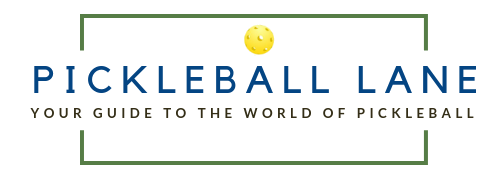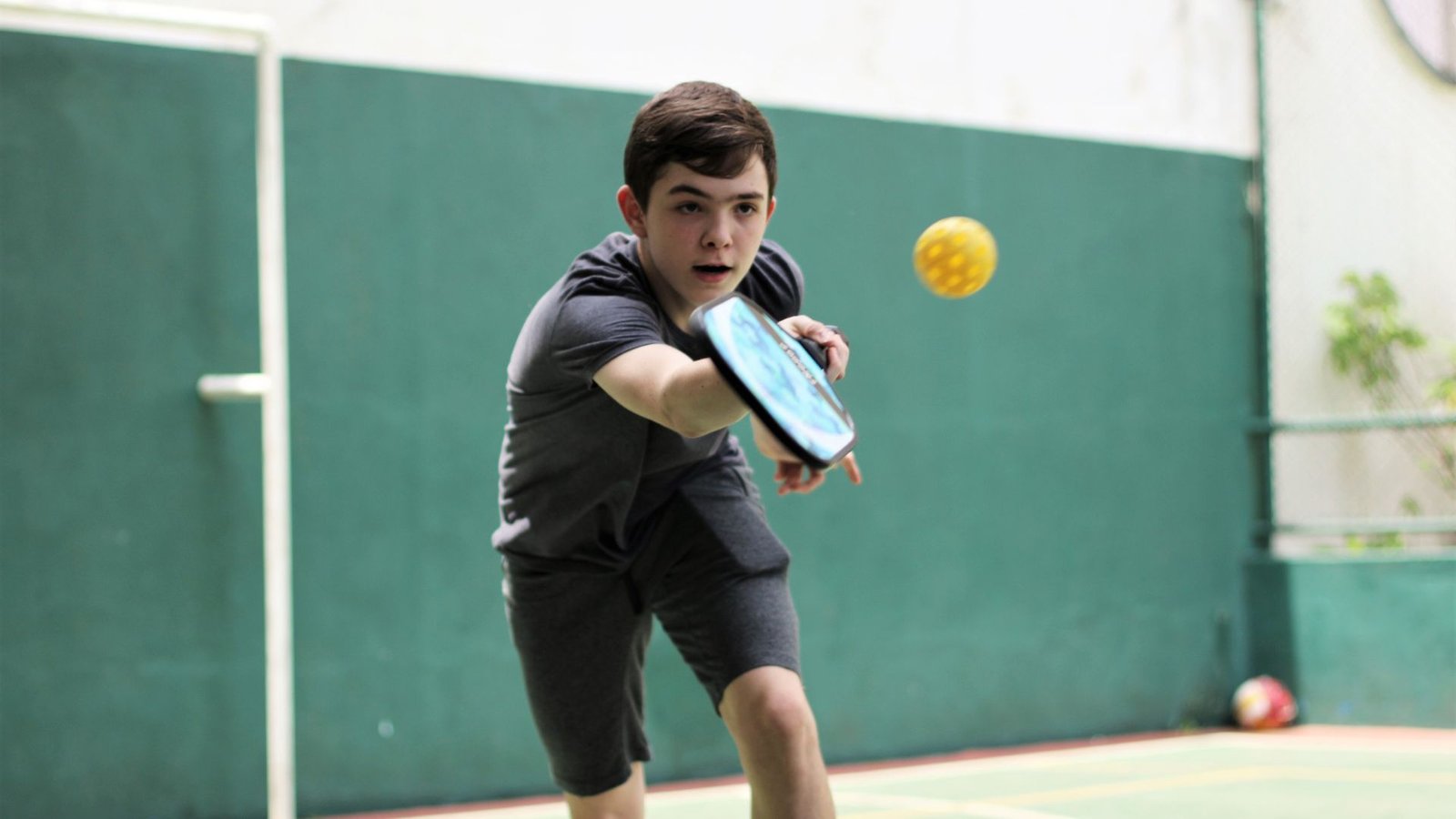Pickleballlane is reader-supported. If you click a link on this page and make a purchase, we may receive a small commission at no extra cost to you.
Article Content
Pickleball is one of the fastest-growing sports, but finding a practice partner isn’t always easy. The good news? Solo drills can dramatically improve your game—if you know the right techniques. Whether you’re refining your serve, perfecting your dink, or boosting footwork, practicing alone can be just as effective as playing with others.
In this comprehensive guide, we’ll explore the best solo pickleball drills, backed by expert recommendations and neuroscience-based training methods. You’ll learn:
- Wall drills to sharpen reflexes and consistency
- Shadow practice to perfect form without a ball
- Serve and accuracy drills to dominate matches
- Advanced techniques like topspin and drop shots
- Equipment hacks for effective home practice
Let’s dive in!
Why Solo Drills Work: The Science Behind Muscle Memory
Before jumping into drills, it’s important to understand why solo practice is so effective:
- Neural Myelination: Repeating drills thickens the myelin sheath around nerve fibers, making movements faster and more automatic.
- Focused Improvement: Without opponents, you can zero in on weak spots (e.g., backhand consistency or footwork).
- Flexibility: Practice anytime, anywhere—no need for a court or partner.
“The passion of practice when no one else is looking is how you become an advanced player.”
Top 5 Solo Pickleball Drills for All Skill Levels
1. Wall Rally Drill (Best for Hand-Eye Coordination & Consistency)
How to Do It:
- Find a smooth wall (10+ feet wide, marked at 34″ to simulate net height).
- Stand 7–10 feet away and hit forehands/backhands, keeping the ball in play.
- Variations:
- Dink Practice: Hit soft shots below the 34″ line.
- Volley Practice: Stand closer (3–4 feet) for rapid-fire reactions.
Pro Tip:
“Aim for a small target (tape a box on the wall) to improve precision.”
2. Static Drop Feed (Best for Groundstrokes & Serves)
How to Do It:
- Drop the ball in front of you, let it bounce once.
- Hit it with proper form, focusing on low-to-high swing mechanics.
- Repeat 50+ times, alternating forehand and backhand.
Why It Works:
- Builds consistent groundstrokes and serves.
- Can be done anywhere (driveway, garage, court).
Modification:
- Use a portable net or chair to simulate net clearance.
3. Shadow Swinging (Best for Footwork & Stroke Mechanics)
How to Do It:
- Mimic swings without a ball, focusing on:
- Weight transfer (step into shots).
- Paddle angle (continental grip for volleys).
- Split-step before each shot.
Advanced Variation:
- Record yourself to analyze form flaws.
4. Serve Target Practice (Best for Accuracy & Strategy)
How to Do It:
- Place targets (cones, towels) in the service box.
- Alternate between:
- Deep serves (back of the court).
- Short serves (near the kitchen line).
Pro Tip:
“Aim for 10 consecutive serves in each target zone before moving on.”
5. Ball Juggling (Best for Paddle Control & Soft Hands)
How to Do It:
- Bounce the ball on your paddle, keeping it airborne.
- Challenge yourself:
- Walk while juggling.
- Switch between forehand and backhand taps.
Why It Works:
- Improves touch for dinks and drop shots.
- Enhances hand-eye coordination.
Advanced Solo Drills for Competitive Players
1. Topspin Drive Practice
- Use the Static Drop Feed but add topspin by brushing low to high with a loose wrist 10.
- Focus on making the ball dip quickly after clearing the net.
2. Third-Shot Drop Simulation
- Hit from the baseline, aiming for the kitchen line.
- Use a chair or barrier as a net substitute.
3. Ghosting Drills (Footwork & Agility)
- Move around the court without a ball, practicing:
- Lateral shuffles.
- Quick transitions from baseline to net.
Bonus DRILLS
1. Ball Bounce Challenge
How to Execute:
- Stand 10-15 feet from a smooth wall with your paddle ready.
- Hit a medium-paced shot against the wall.
- Let the ball bounce once on the ground.
- Quickly hit it twice in the air (forehand then backhand) before returning it to the wall.
Key Focus Areas:
- Timing: Forces you to adjust between groundstrokes and volleys.
- Adaptability: Trains quick transitions between shot types.
- Paddle Control: Develops soft hands for touch shots.
Progression:
➔ Start slow, then increase speed as you improve.
➔ Challenge yourself to 10 consecutive successful sequences.
2. Obstacle Course Drills
Setup:
- Place 5-7 cones in zigzag patterns across half a court.
- Optionally, add a chair as a “net” obstacle.
Drill Variations:
- Dribble Drill: Bounce the ball on your paddle while navigating cones.
- Shot + Footwork: Hit forehands/backhands at targets between cones.
Benefits:
- Agility: Improves lateral movement and quick direction changes.
- Hand-Eye Coordination: Balances paddle control with footwork.
Advanced Tip:
➔ Time yourself and aim to beat your record each round.
3. Bucket Target Drill
Setup:
- Place a 5-gallon bucket (or laundry basket) in the NVZ (kitchen).
- Stand at varying distances (baseline, midcourt, NVZ line).
Execution:
- Hit soft dinks or drop shots aiming to land the ball inside the bucket.
- Reset after each attempt.
Why It Works:
- Precision: Eliminates floating/”dead” dinks that opponents attack.
- Consistency: Builds muscle memory for NVZ play.
Progression:
➔ Start with 5 successful shots from each distance before moving back.
4. Dink and Lob Combo
How to Practice:
- Alternate between:
- A soft dink aimed at the kitchen line.
- An offensive lob targeted just behind the baseline.
Wall Variation:
- Use a wall to simulate opponent reactions:
- Dink softly, then lob high off the wall rebound.
Key Skills Developed:
- Shot Variety: Switches between finesse and power.
- Strategy: Mimics real-game sequences to wrong-foot opponents.
Coaching Tip:
➔ Focus on disguising your lob motion to look like a dink.
5. Hit and Run (Advanced)
Execution:
- Start at the baseline. Hit a hard sideline shot against a wall/backboard.
- Sprint to the opposite sideline to “return” an imaginary cross-court rebound.
- Repeat for 30-60 seconds.
Focus Areas:
- Endurance: Simulates long rallies.
- Recovery Footwork: Trains quick directional changes.
Modification:
➔ Use a ball machine for real-ball feedback.
6. Rolling Shot Practice
Purpose:
Master reset shots during fast-paced rallies.
How to Do It:
- Hit low groundstrokes that land just past the kitchen line.
- Use a wall to vary angles (simulate opponent returns).
Technique Tips:
- Keep knees bent for low contact points.
- Follow through toward the target.
Why It Matters:
- Prevents pop-ups that opponents smash.
7. Reflex Training
Wall Drill:
- Stand 3-4 feet from a wall.
- Rapidly volley, alternating between soft blocks and hard punches.
Game Simulation:
- Call out shot types (“volley,” “dink”) to randomize responses.
Mental Benefit:
- Trains calm decision-making under pressure.
8. Footwork Ladder Drills
Setup:
Use an agility ladder or tape lines on the ground.
Drills to Try:
- Side Shuffles: Stay low while moving laterally.
- In-Out Steps: Quick entries/exits from the NVZ.
Data Point:
➔ Regular practice can improve lateral speed by 15% .
9. Catch and Return
How to Execute:
- Let the ball barely bounce on your paddle before softly redirecting it.
- Use continental grip for control.
Use Case:
- Perfect for mastering “dead” balls in the NVZ.
10. Mirror Visualization
Advanced Mental Drill:
- Stand before a mirror with your paddle.
- Visualize an opponent’s shot (e.g., “hard drive to backhand”).
- React with proper footwork and stroke.
Pro Tip:
➔ Verbalize shots (“now a lob!”) to enhance focus.
Key Takeaways
- For Beginners: Start with Static Drop Feeds and Wall Rallies to build fundamentals.
- For Intermediate Players: Focus on Third-Shot Drops and Bucket Targets for precision.
- For Advanced Players: Master Hit and Run and Reflex Training for competitive edges.
“Solo drills transform idle time into skill refinement. The wall never tires, and neither should your commitment to improvement.
Equipment Hacks for Effective Solo Practice
- Portable Nets: Use a folding net or string a rope between chairs.
- Ball Machines: Affordable options like the Pickleball Tutor simulate real-game shots.
- DIY Wall Pad: Attach foam panels to a wall for rebound practice.
Key Takeaways
✅ Wall drills improve consistency and reflexes.
✅ Shadow practice perfects form without a ball.
✅ Serve accuracy wins matches—practice daily.
✅ Advanced players should focus on topspin and drop shots.
✅ Minimal equipment is needed—get creative!
“Solo practice is the secret weapon of champions. The wall never gets tired, and neither should your dedication.”
Now it’s your turn! Grab your paddle, pick a drill, and start training. Your future self will thank you when you dominate the court.
Also Read:

